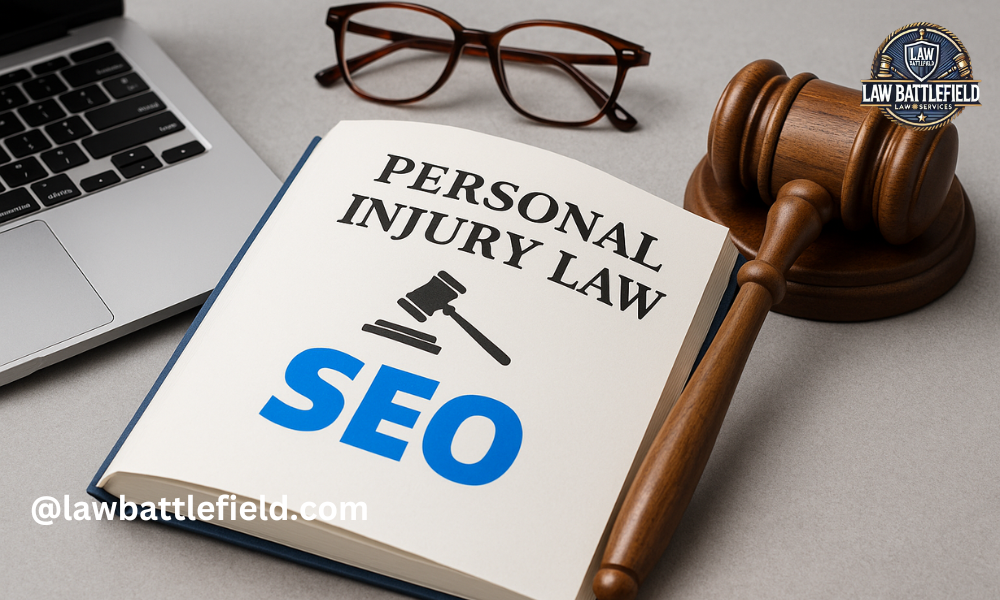Introduction To Personal Injury Settlements
A personal injury settlement is an agreement in a legal case where a person hurt in an accident gets money from the person or company at fault. This settlement covers costs and losses from the injury. Common accidents in these cases include car accidents, slip and falls, and medical malpractice. Each type of accident can lead to a settlement if someone else was at fault. These settlements help the injured person cover medical bills, lost wages, and other expenses from the injury.
Types Of Damages Recoverable
In personal injury cases, injured parties can seek several types of damages to cover their losses. Here are the main categories:
- Medical costs: The price of hospital stays, doctor visits, physical therapy, prescription drugs, and any more treatment needed for the injury in the future.
- Lost wages: Money for wages lost due to time away from work because of the injury. This includes future lost earning capacity if the injury affects the ability to work.
- Pain and suffering: Compensation for physical pain and emotional distress from the injury.
- Property damage: Money to repair or replace property damaged in the accident, like a car in a crash.
- Punitive damages: Extra money aimed at punishing the party at fault if their actions were especially harmful or reckless. This is not common and depends on the case specifics.
These damages help victims manage the financial impact of their injuries and encourage responsible behavior from others.
Factors Influencing Settlement Amounts
Several factors affect the amount of money received in a personal injury settlement:
- Severity of injuries: More severe injuries often lead to higher settlements due to increased medical costs and longer recovery times.
- Impact on lifestyle: If the injury permanently affects the victim’s ability to enjoy life, work, or perform daily activities, this can significantly increase the settlement.
- Liability clarity: Clear proof that the other party was at fault can lead to higher settlements. If fault is shared or unclear, it might reduce the amount.
- Insurance coverage limits: The maximum amount covered by insurance policies often sets the upper limit of what can be recovered in a settlement.
- Role of legal representation: Skilled lawyers can negotiate better settlements and navigate complex legal issues, improving the chances of a favorable outcome.
Examples Of Settlement Amounts
Settlement amounts in personal injury cases can vary widely:
- Minor injuries, like small cuts or bruises from a car accident, might settle for a few thousand dollars.
- More serious injuries involving broken bones or significant trauma can lead to settlements in the tens or hundreds of thousands of dollars.
- Severe cases, such as those causing permanent disability or chronic pain, can result in settlements or awards in the millions. For example, severe spinal injuries or traumatic brain injuries from car accidents often see high compensation due to their devastating impact on the victim’s life and massive ongoing medical expenses.
Each case is unique, and these amounts can vary based on the specifics of each situation.
Statute Of Limitations
The statute of limitations is a crucial legal timeframe within which a victim must file a personal injury claim. This period varies by state and the type of injury involved. Failing to file within this timeframe generally means losing the right to sue and recover damages, no matter how severe the injury might be. It is essential for victims to understand and act within these time limits to preserve their legal rights.
Legal Strategies To Maximize Settlements
Attorneys use various strategies to maximize personal injury settlements:
- Uncovering all applicable insurance policies: Lawyers often investigate not just the obvious insurance policies but also potential additional policies, like umbrella policies, which might provide higher compensation.
- Demonstrating the extent of damages and liability: Effective legal representation involves meticulously documenting the injuries, associated costs, and proving the other party’s liability. This can include gathering medical records, expert testimonies, and evidence of negligence.
- Negotiating with insurance companies: Attorneys are skilled in negotiating with insurance adjusters to maximize the settlement amount, often going beyond initial offers to cover all potential damages fully.
These strategies are tailored to each case’s specifics, aiming to ensure that victims receive the full compensation they deserve for their losses.
Common Misconceptions About Settlements
Several myths persist about personal injury settlements, including:
- Full medical expenses are always covered: Many believe that settlements will always fully cover all medical bills. In reality, the settlement might only cover a portion of these costs, depending on the insurance policy limits and the negotiation outcome.
- Settlements equate to the initially demanded amount: The first amount demanded is often not what is finally agreed upon. Settlements are typically the result of negotiations and may end up being more or less than initially demanded, depending on evidence, legal arguments, and insurance coverage.
Case Studies
Case studies can demonstrate the variability and negotiation processes in personal injury settlements:
Soft Tissue Injury Settlement:
In a reported case, a victim suffered bruises and contusions from an airbag deployment in a minor car accident. Initial medical costs were relatively low, and the victim demanded $1,500 based on these and other damages. However, after negotiations, the settlement was agreed at $1,100.
Severe Brain Injury Settlement:
Another case involved a child who suffered severe brain injuries due to medical malpractice at birth. The initial condition seemed stable, but complications quickly arose, leading to significant lifelong disabilities. This case was settled for $34.7 million, reflecting the high medical costs, the child’s long-term needs, and the severity of the injury.
These examples show how different factors like injury severity, medical costs, and legal strategies affect the settlement outcomes in personal injury cases.
Hiring A Personal Injury Lawyer
Consulting with an experienced personal injury lawyer is crucial for anyone involved in an accident that resulted in injury. These legal experts are equipped to accurately assess claims and guide victims through the complexities of the legal process. A knowledgeable attorney can help in identifying all potential sources of compensation, crafting a strong argument for liability, and ensuring that all paperwork and deadlines are managed correctly. Their expertise often leads to more favorable settlement outcomes.
Conclusion
Personal injury cases vary widely in terms of complexity, damages recoverable, and potential settlement amounts. Understanding the factors that influence settlements, such as the severity of injuries, legal representation, and insurance limits, is essential. Misconceptions about settlements can lead to unrealistic expectations, so it’s important to be informed. Given the complexities and potential high stakes of personal injury claims, securing experienced legal representation is advised to maximize the likelihood of a favorable outcome. If you’ve suffered an injury due to someone else’s negligence, consult a personal injury lawyer to discuss your specific situation and explore your legal options.
FAQs
How Long Do I Have To File A Personal Injury Claim?
The time limit to file a claim, known as the statute of limitations, varies by state and the type of injury. Typically, you have between one to three years from the date of the accident to file a lawsuit.
What Types Of Damages Can I Recover In A Personal Injury Case?
You can typically recover damages for medical expenses, lost wages, pain and suffering, property damage, and in some cases, punitive damages.
How Much Compensation Can I Expect From A Personal Injury Settlement?
Settlement amounts can vary widely based on factors such as the severity of your injuries, the impact on your lifestyle, and the clarity of liability. Minor cases may settle for a few thousand dollars, while severe cases can reach into the millions.
Do I Really Need A Lawyer For A Personal Injury Claim?
Yes, hiring an experienced personal injury lawyer can significantly influence the outcome of your case. Lawyers can help negotiate settlements, represent you in court if necessary, and ensure that all legal procedures are correctly followed.
Can I Still Receive A Settlement If I Was Partially At Fault For The Accident?
Yes, you can still receive compensation if you were partially at fault, but the amount may be reduced by your percentage of fault. This depends on the state’s laws regarding comparative or contributory negligence.
How Are Pain And Suffering Calculated In A Settlement?
Pain and suffering are calculated based on the severity and duration of your injuries, the impact on your daily life, and sometimes using a multiplier method based on your actual economic damages.
What Happens If We Can’t Reach A Settlement?
If a settlement cannot be reached, your case may go to trial, where a judge or jury will determine the outcome based on the evidence presented.Top of Form
Was this article helpful? Check out more on Lawbattlefield.com
Maximizing Your Claim: Hiring A Personal Injury Lawyer Slip And Fall Cases





